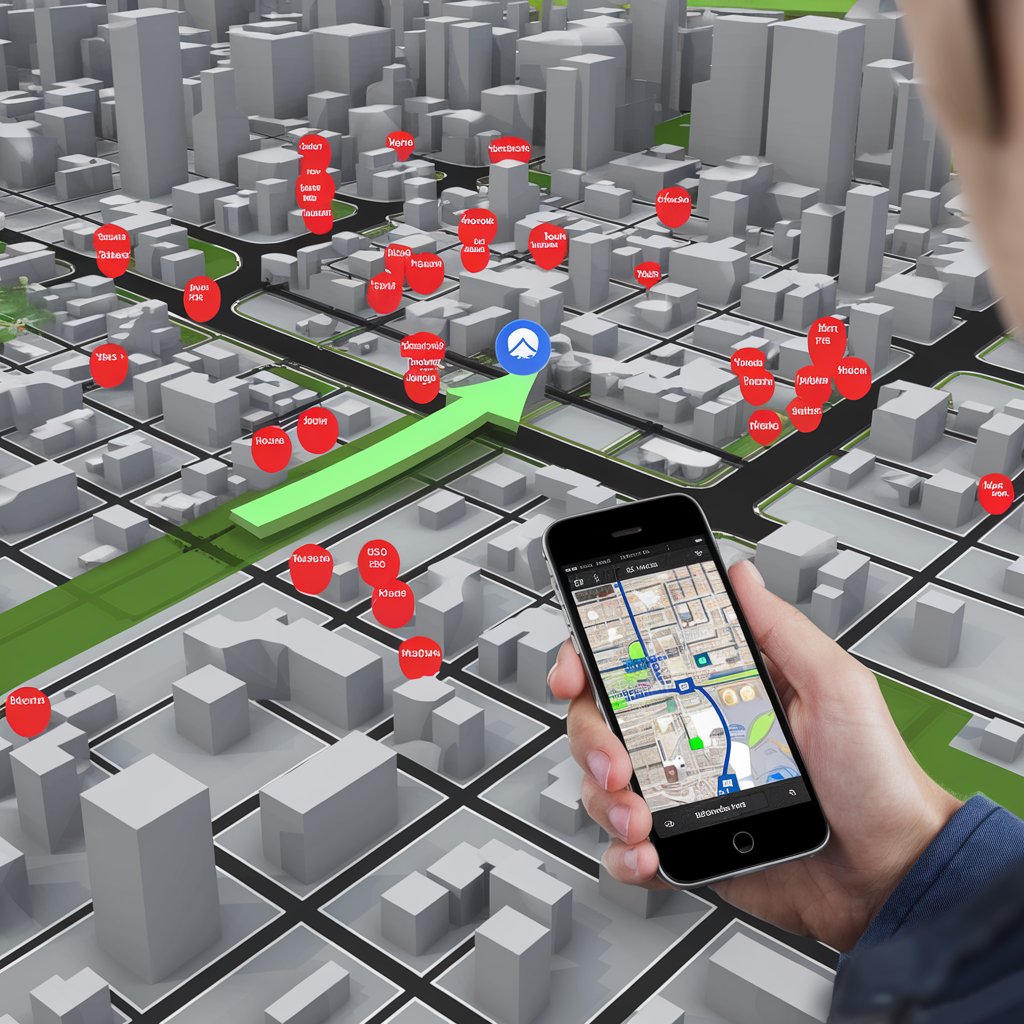The augmented reality (AR) navigation industry is on the brink of transformative growth, fueled by technological advancements and evolving consumer expectations. By overlaying digital information onto the physical world, AR enhances navigation experiences, making them more intuitive and engaging. In this blog, we will explore future trends across various sectors, including car navigation systems, indoor navigation, pedestrian navigation, aviation, and marine applications.
The augmented reality (AR) navigation market is expected to reach USD 6.33 billion by 2029 from USD 1.17 billion in 2024, at a CAGR of 40.3% during the 2024-2029 period. Multiple companies like Volkswagen (Germany), Mercedes-Benz Group AG and many others are investing is augmented reality (AR) navigation which is increasing the opportunity for growth in the AR navigation market. The AR navigation industry is continuously developing, with the presence of multiple players. Currently, the North America region is contributing significantly to the growth of the AR navigation industry. Similarly, Asia Pacific, Europe and RoW regions are expected to be the growing market for the forecasted period.
1 . Augmented Reality in Car Navigation Systems
Enhanced User Experience
Future car navigation systems will increasingly leverage AR to provide drivers with real-time, context-aware information. Key enhancements include:
Overlaying Directions: Imagine directions displayed directly on the road ahead, helping drivers navigate without taking their eyes off the road.
Hazard Alerts: Immediate notifications for potential hazards—such as pedestrians or road conditions—will improve safety significantly.
Integration with Vehicle Systems
AR will also integrate with other vehicle systems to enhance functionality. Notable trends include:
Vehicle-to-Everything (V2X) Communication: By utilizing data from connected vehicles and infrastructure, AR systems will provide up-to-date information on traffic conditions, accidents, and weather, creating a more comprehensive navigation experience.
2 .Use of AR in Indoor Navigation
Wayfinding in Complex Environments
AR will revolutionize indoor navigation in venues like malls, airports, and hospitals. Important developments include:
Real-Time Positioning: By using AR alongside beacons and GPS technology, users will receive accurate indoor positioning to guide them to their destinations.
Interactive Maps: Users can interact with 3D maps to get visual cues and information about nearby facilities, greatly enhancing their overall experience.
Personalization
Future indoor navigation systems will utilize user data for a more tailored experience:
Tailored Routes: Users will receive personalized route recommendations based on preferences, such as avoiding crowds or accessing specific shops.
3. AR Navigation for Pedestrians
Smart City Integration
As cities evolve into smart environments, pedestrian AR navigation will become more sophisticated:
Real-Time Data Integration: Access to live data about foot traffic, events, and construction updates will allow pedestrians to make informed decisions about their routes.
Social Features: Integration with social networks will enable users to see recommendations from friends or popular locations nearby.
Safety Enhancements
Future pedestrian AR navigation systems will prioritize safety with features like:
Hazard Awareness: Alerts for approaching vehicles or cyclists will help pedestrians remain aware of their surroundings while navigating.
Download PDF Brochure @ https://www.marketsandmarkets.com/pdfdownloadNew.asp?id=150009689

4. AR Navigation in Aviation and Drone Technology
Enhanced Flight Navigation
In aviation, AR will be critical for improving navigation systems:
Heads-Up Displays (HUD): Pilots will benefit from HUDs that overlay critical flight information—such as altitude and speed—directly onto their field of vision.
Terrain Awareness: AR will enhance situational awareness by displaying terrain features, helping pilots avoid obstacles and navigate more safely.
Drone Navigation
AR will also transform drone navigation, with applications such as:
Autonomous Flight Pathing: Drones equipped with AR systems can autonomously navigate complex environments using visual markers and real-time data to adapt flight paths.
Delivery Services: AR will assist in identifying optimal drop-off points and navigating to them safely.
5. AR in Marine and Ship Navigation
Improved Navigation Systems
The marine industry will increasingly adopt AR to enhance navigation capabilities:
Digital Chart Overlays: AR systems can overlay digital charts onto the real-world view, providing navigators with crucial information about depth, hazards, and points of interest.
Collision Avoidance: AR will assist in collision avoidance by displaying nearby vessels and potential hazards in real-time.
Training and Simulation
AR will play a significant role in training marine professionals:
Simulated Environments: AR training programs will simulate various marine scenarios, helping crews practice navigation and emergency procedures in a safe environment.
The future of the augmented reality navigation industry is promising, with innovations set to enhance how we navigate in diverse environments. From car navigation systems and indoor wayfinding to pedestrian navigation and applications in aviation and marine technology, AR is poised to significantly transform user experiences. As these technologies continue to evolve, we can expect safer, more efficient, and more personalized navigation solutions that redefine our interactions with the world. Embracing these trends will be essential for stakeholders aiming to thrive in this dynamic market.